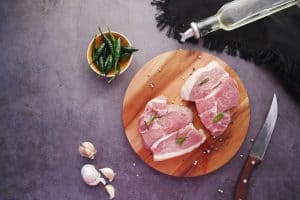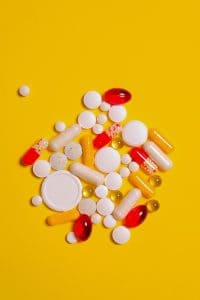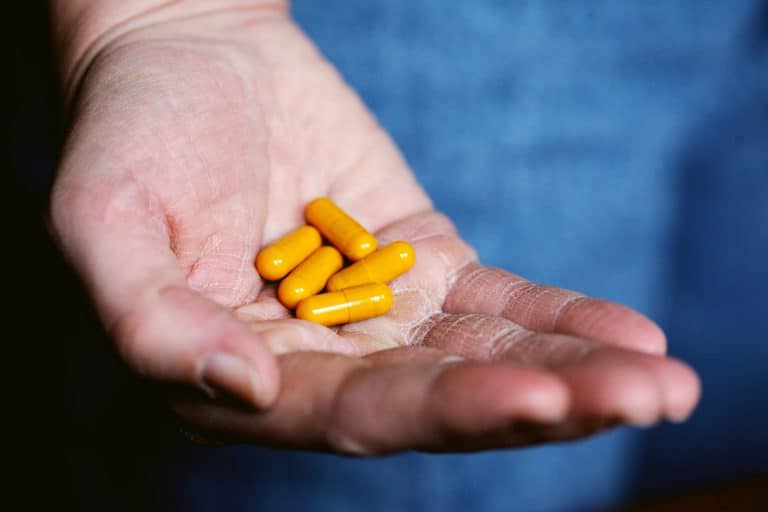Iron is a crucial mineral required by the body to produce hemoglobin, a protein in red blood cells that carries oxygen to different parts of the body. Iron also plays a critical role in maintaining healthy immune function and energy levels. However, many people do not consume enough iron in their diets, leading to iron deficiency and even anemia. In this blog post, we will discuss the importance of iron stores, the symptoms of iron deficiency, and how to increase your iron intake through iron-rich foods.
Iron Deficiency: Signs and Symptoms

Iron deficiency is a common condition that can lead to iron deficiency anemia if left untreated. Iron deficiency occurs when the body’s iron stores are depleted, and the body cannot produce enough hemoglobin to carry oxygen to tissues and organs. Some of the common symptoms of iron deficiency include fatigue, weakness, dizziness, pale skin, shortness of breath, and cold hands and feet. In severe cases, iron deficiency can cause restless legs syndrome, anemia, and impaired immune function.
Iron Stores and Iron Absorption
Iron is stored in the body’s tissues, mainly in the liver, bone marrow, and spleen. These iron stores help maintain the body’s iron homeostasis, ensuring that enough iron is available for making red blood cells. However, when the body’s iron stores become depleted, it cannot produce enough hemoglobin, leading to iron deficiency anemia. Our bodies absorb iron from food in two forms: heme and non-heme iron. Heme iron is found in animal-based foods like red meat, poultry, and fish, and it is more easily absorbed than non-heme iron. Non-heme iron is found in plant-based foods like legumes, nuts, seeds, and dark green leafy vegetables.
Iron-Rich Foods
Iron-rich foods can help increase your body’s iron supply and prevent iron deficiency anemia. Here are some iron-rich foods that you should include in your diet:

- Red Meat: Beef, lamb, and pork are excellent sources of heme iron.
- Poultry: Chicken and turkey are also rich sources of heme iron.
- Fish and Shellfish: Oysters, clams, sardines, and tuna are good sources of heme iron.
- Legumes: Lentils, chickpeas, and kidney beans are rich sources of non-heme iron.
- Nuts and Seeds: Pumpkin seeds, cashews, and almonds are good sources of non-heme iron.
- Dark Green Leafy Vegetables: Spinach, kale, and broccoli are excellent sources of non-heme iron.
- Iron-Fortified Cereals and Breads: Many breakfast cereals and breads are fortified with iron.
Tips for Increasing Iron Absorption
Iron absorption from food can be enhanced by consuming foods rich in vitamin C. Vitamin C helps convert non-heme iron into a form that the body can absorb easily. Some vitamin C-rich foods include oranges, kiwis, strawberries, and bell peppers. Consuming animal-based foods with non-heme iron sources can also enhance iron absorption. For example, consuming lentils with beef or chicken can increase iron absorption.
Iron Supplements

In some cases, iron supplements may be necessary to treat iron deficiency anemia. Iron supplements are available in different forms, including ferrous sulfate and ferrous gluconate. It is important to take an iron supplement as prescribed by your healthcare provider, as too much iron can be harmful. Iron supplements can cause constipation, nausea, and stomach upset, so it is essential to take them with food.
How Much Iron Do You Need?
The amount of iron you need depends on your age, gender, and other factors. The recommended daily allowance (RDA) for iron is 8 milligrams for men and postmenopausal women, 18 milligrams for women of childbearing age, and 27 milligrams for pregnant women. Vegetarian and vegan diets may require higher iron intake due to the lower bioavailability of non-heme iron sources.
Iron Loss and Increased Risk
Certain groups of people are at an increased risk to develop iron deficiency anemia. Women of childbearing age are at a higher risk due to menstrual blood loss. People with chronic blood loss, such as those with ulcers or colon cancer, are also at an increased risk of developing iron deficiency anemia. People who consume a typical Western diet, which is low in iron-rich foods, may also be at risk.
Iron Deficiency Erythropoiesis and Serum Iron
Iron deficiency erythropoiesis refers to the inability of the body to produce enough red blood cells due to low iron levels. Serum iron and serum ferritin levels are commonly measured to assess iron status in the body. Serum iron levels reflect the amount of iron in the blood, while serum ferritin levels reflect the amount of iron stored in the body. Low serum ferritin levels indicate low iron stores, which can lead to iron deficiency and anemia.
Iron Storage and Iron Fortification
Iron storage in the body is crucial for maintaining healthy iron levels. Iron-fortified foods like cereals and bread can help increase iron intake, but it is important to consume a variety of iron-rich foods to ensure sufficient iron intake. Consuming too much iron can also be harmful, so it is important to get iron levels checked through a blood test before taking iron supplements.
Final Thoughts: Iron Stores: How to Increase Your Supply with Iron-Rich Foods
Iron deficiency and anemia can have significant health consequences, including fatigue, weakness, and impaired immune function. Consuming iron-rich foods can help increase iron intake and prevent iron deficiency anemia. It is important to include a variety of iron-rich foods in your diet and consume foods rich in vitamin C to enhance iron absorption. In some cases, iron supplements may be necessary to treat iron deficiency anemia, but it is important to take them as prescribed by a healthcare provider. By maintaining healthy iron stores, you can support healthy red blood cell production and overall health and wellbeing.
Other suggested articles:

